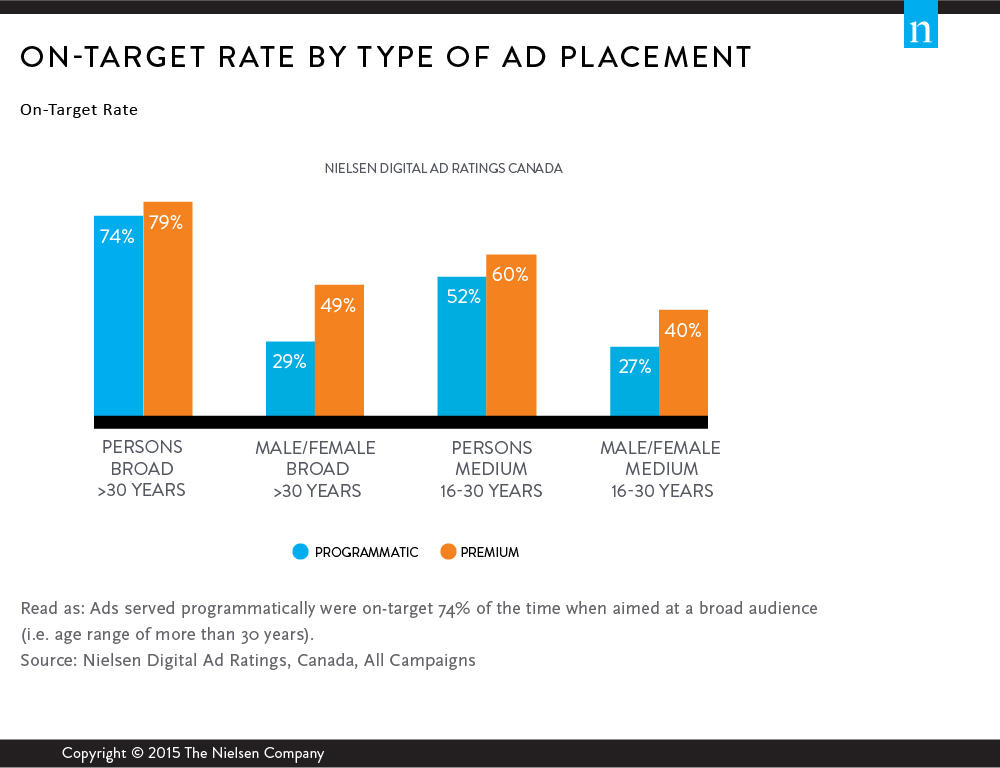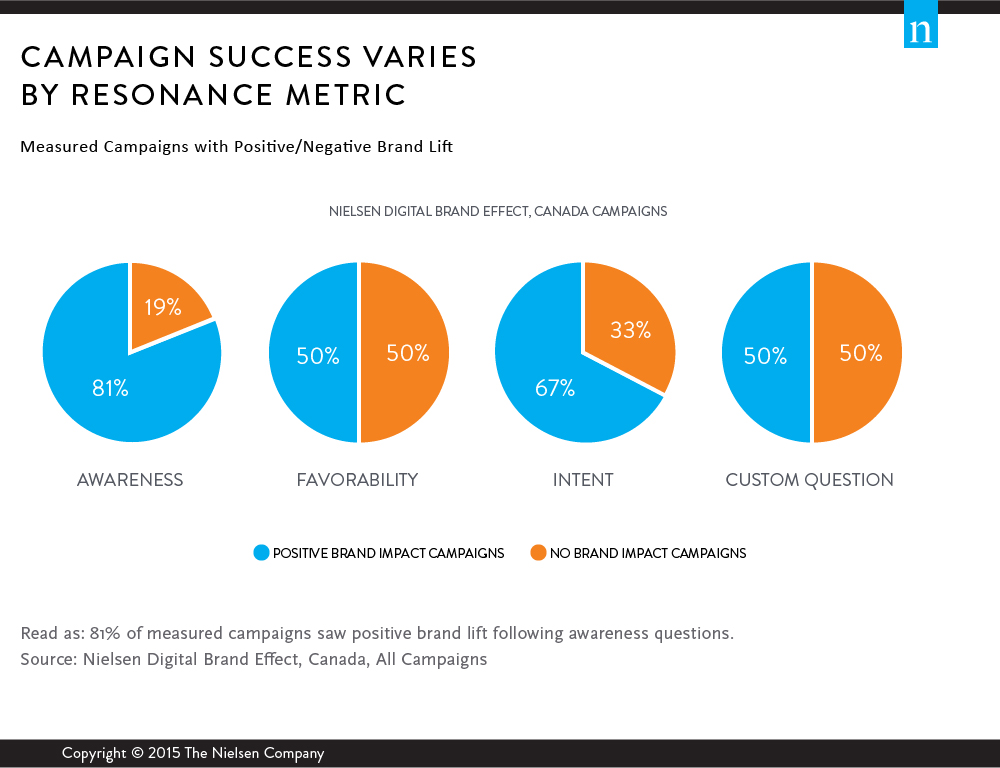Mobile is quickly becoming a strong factor in many ad campaigns, and as digital technology becomes more ubiquitous, it’s critical that marketers know if this medium is helping them connect with on-the-go consumers. Connecting with desired audiences is job No. 1 for marketers, and with the launch of mobile measurement in Digital Ad Ratings earlier this year, marketers in Canada can now assess how their mobile reach compares with other mediums.
A look at data during the month of May found that the on-target percentage of Canadian ads viewed on mobile was nearly the same as it was on desktop computers: 44% and 47%, respectively. And while desktop impressions significantly outnumbered mobile impressions (there were 90% fewer mobile impressions), the difference in frequency between the two platforms wasn’t as drastic: consumers saw mobile ads about 30% less often than desktop ads, at 1.8 and 2.6 times, on average, respectively.
Bigger Is Better – At Least for Demographics
When it comes to ad reach, an analysis of all Digital Ad Ratings campaigns in Canada found that campaigns aimed at a broader audience tend to be more successful at hitting their goal than those intended for a smaller group. For instance, campaigns directed at consumers between the ages of 25-54 reached the intended recipients 56% of the time, on average. Among people 18-49, the rate increased to 69%. On the digital front, men tend to be easier to reach than women, as ads reached males 18-49 an average of 44% of the time, compared with 36% of the time among women of the same age. In fact, for both the 25-54 and 18-49 age groups, males were easier to reach than females, as ads reached males aged 25-54 at a rate of 40%, compared with 32% for females.
In looking at ads bought directly from a publisher (premium) and those served programmatically (via real-time bidding), on-target percentages were similar when the desired audience included both genders over a broad age range (one spanning more than 30 years), 79% and 74% of the time, respectively. Within more narrow audience parameters (16-30-year age difference), however, premium ads reached their desired audiences more than ones served programmatically.

The trend was similar for display and video ads, with on-target rates (OTRs) of 79% and 70%, respectively, when the intended audience was broad. When aiming to reach all people within a 16-30-year age range, both ad types had similar on-target rates, 54% and 52%, respectively. The largest difference in OTR was for ads directed at males or females within a 30+ year age range, as display was on-target 41% of the time while video had an on-target rate of 27%.
Viewability Adds Value
But reach doesn’t guarantee viewability, one of the hottest topics right now in digital advertising. While it’s critical to know that your ads reach the right consumer, marketers are increasingly seeking validation that consumers are actually seeing them.
In looking at data from the recent Digital Ad Ratings study, both premium and programmatic ads were found to be more viewable than the average Canadian campaign (34% are viewable). Comparatively, an average of 40% of premium placements and 37% of programmatic ads were viewable by their desired audience. Ad type is another consideration: 37% of display ads were viewable. Additionally, ads on English-language sites were viewed more than ads on French Canadian sites (35% and 22%, respectively), which typically have less available ad inventory than English sites.
Effectiveness Beyond Sight
While reach and viewability are key elements of any ad campaign, the big question is whether it influences consumers’ perceptions about a brand—and ultimately influences purchase intent. In looking at the recent Nielsen Digital Brand Effect data, nearly two-thirds (65%) of Canadian campaigns resonated positively with viewers, which shows that most campaigns did indeed drive brand lift.
And of course, the definition of campaign success can vary by an advertiser’s specific objective (i.e., awareness, favorability, purchase intent). More than 80% of Canadian campaigns saw a positive brand lift following questions to consumers about awareness, which isn’t surprising, given that awareness is typically easiest to influence. On the other hand, it’s generally more difficult for advertisers to sway consumers to actually dig into their wallets (or mobile wallets) and purchase a product. But the good news for Canadian marketers is that on average, 67% of campaigns resonated positively with consumers following questions about intent.

Methodology
Analysis of all Canadian ad campaigns measured by Nielsen Digital Ad Ratings. The custom analysis looked at the average on-target percent by demographic and placement type, as well as viewability rates across various type of ads and placements. In addition, a separate Nielsen Digital Brand Effect study looked at brand lift across an aggregation of over 60 Canadian campaigns.



